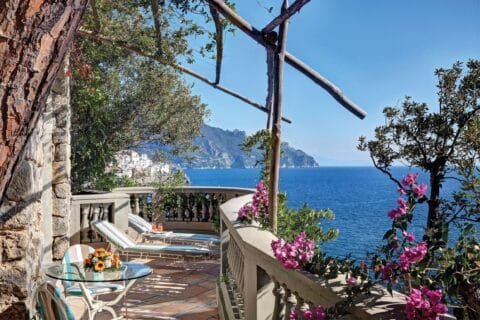The Great Ocean Road Australia, has been famously regarded as perhaps the most magnificent coast route all over the world, which spans a superb 240 km of the breathtaking coast of the south-east of Victoria. The route is famous along well-known due to the impressive limestone cliffs, crystal beaches and well-known sights, like the 12 Apostles, which makes it a quite easy combination between natural beauty and rich history. It is possibly one of the best attractions that one can ever visit in Australia, and the tourists would be able to visit the cosy beach resorts, National Parks and world-renowned surf beaches, an experience that could never be erased from the list of every tourist visiting the country.
Why the Great Ocean Road is So Special
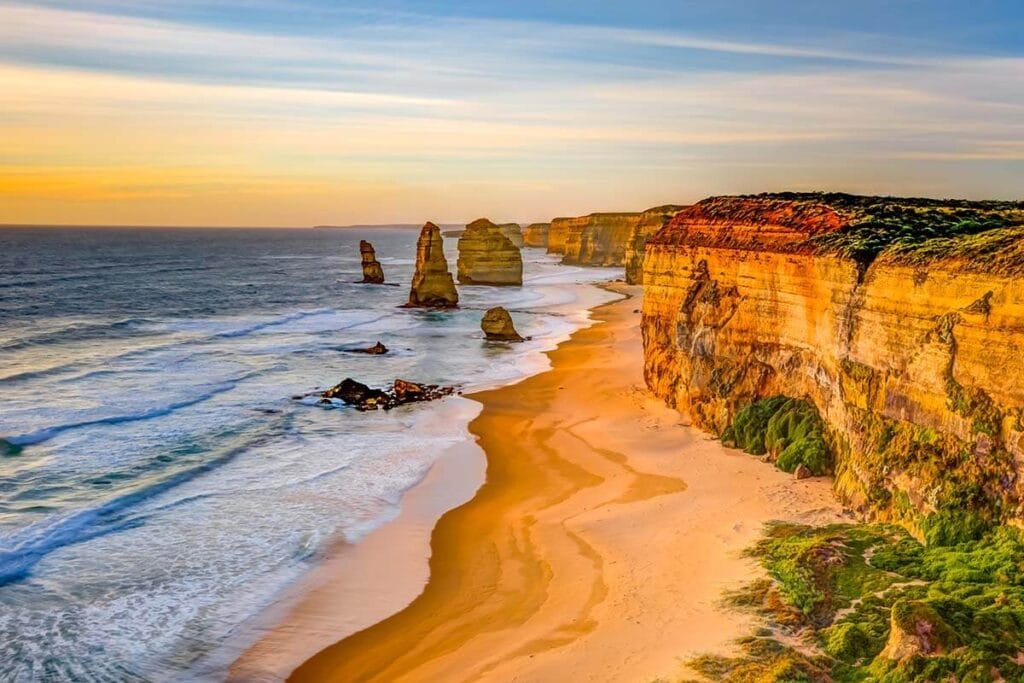
The Great Ocean Road Australia is not just another scenic road; it is a National Heritage-listed road with an interesting history to boot. Constructed between 1919 and 1932 by returning World War I soldiers, it is the largest war memorial in the world and commemorates the lives of servicemen of Australia who lost their lives. This is sufficient on its own to make the drive memorable, but it is the natural beauty that one would encounter along the route that makes people want to go there time and again.
These features include dramatic limestone cliffs, turquoise waters, beautiful beaches and some famous features, such as the 12 Apostles. Surfing and the spirit are in its genes, so much so that world-famous surf breaks like Bells Beach (where Rip Curl and Quiksilver were started) are home to surfing fans the world over. And in case you have ever fantasized about coming to see a koala in its natural habitat, this is the place.
Great Ocean Road Planning Tips
A small portion of preparation before leaving will turn an enjoyable vacation into a thrilling adventure. The following are some of the things that one should remember:
Drive West to East
The traveller with time to spend begins at Torquay and rushes west, but commencing here at Warrnambool and facing eastwards, one has the benefit of following the ocean side of the road in unobstructed view, and by travelling east, also largely avoids the heavy congestion.
Take More Than a Day
Although technically the journey is possible in one standard day, taking 3-5 days allows time to discover the secret delights of this route, as well as to sit back and relax in the seaside towns, truly absorbing the passing manors and the changing landscape.
Book Accommodation in Advance
Accommodation, especially unique places of staying; such as cabins or camp grounds, may be booked during the most popular time of the year, such as the holiday period in Otway National Park. Bookings should be made at least six months ahead.
The Route: A Three-Leg Journey
Leg 1: Melbourne to Warrnambool
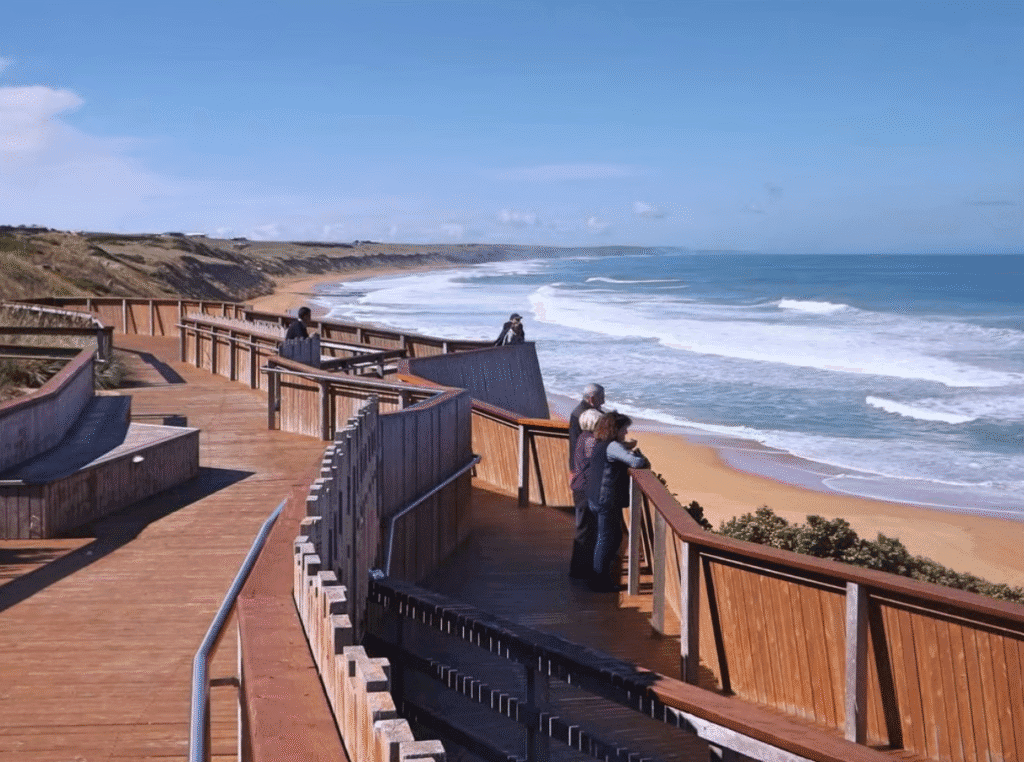
It is a 3.5-hour drive inland with a starting point of Melbourne to Warrnambool. Not the most beautiful piece, but the scenery of the countryside is very peaceful and establishes the ambience during the trip. Warrnambool is a relaxed seaside town in itself, with excellent eating.
- Restaurants: Simon Waterfront at dinnertime, when you can see the ocean, visit Pavilion Cafe, when the sun goes down and have breakfast.
- Must-See: The whale-watching platform at Logan’s Beach (May-August) to see migrating southern right whales.
Leg 2: Warrnambool to Cape Otway (Shipwreck Coast)
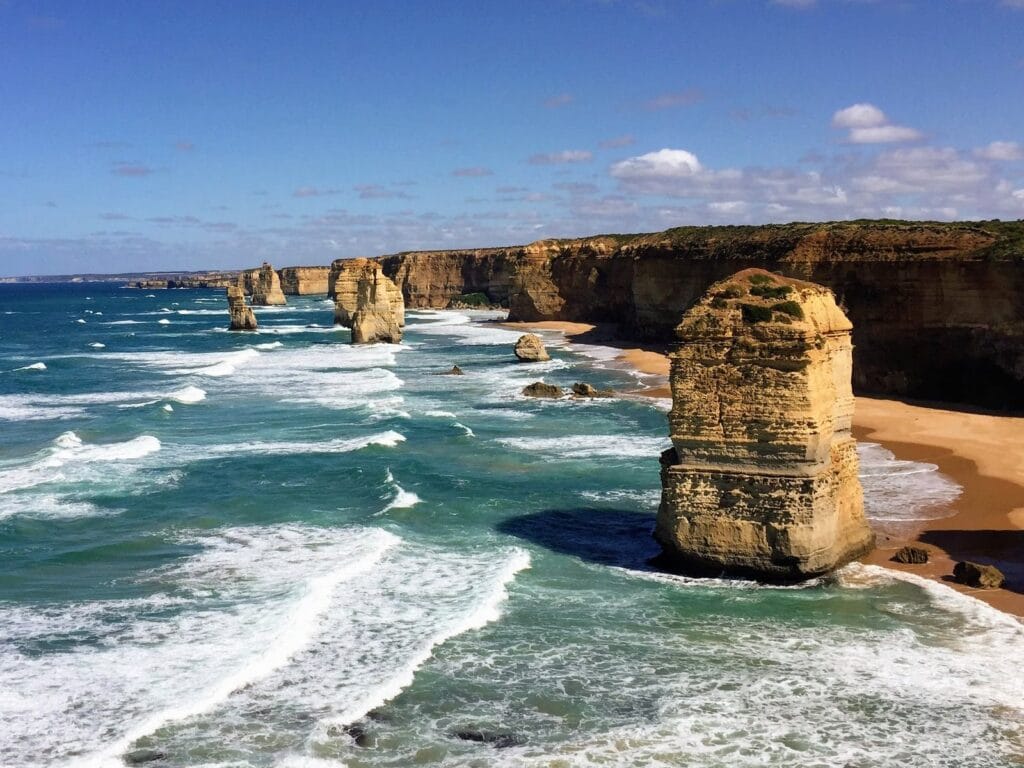
This section of the Great Ocean Road Australia is the beginning of their most dramatic views. Nicknamed the Shipwreck Coast, it gets its name from the 50 vessels wrecked on the wild Southern Ocean and is home to some of the country’s most striking natural attractions.
Major attractions on this stretch of the Great Ocean Road trip are:
- Bay of Islands: Elevated limestone stacks situated off the sea giving panoramic view of the ocean.
- The Grotto: A geological sightseeing attraction that is considered an aggregation of a sinkhole, cave, and arch.
- London Arch: This is originally a two-arched rock Arch, which was later altered in the year 1990 when the other span broke down.
- The 12 Apostles: Eight technically but they are still one of the most iconic coastal scenes the world has ever seen.
- Loch Ard Gorge: A bay of turquoise surrounded with gold limestone cliffs, named after one heartbreaking ship wreck.
Tip: In order to have a quieter atmosphere, it is advisable to visit the 12 Apostles in the early morning or at sunset when the light may be most dramatic and there may be no one around so much.
Cape Otway and Koala Encounters
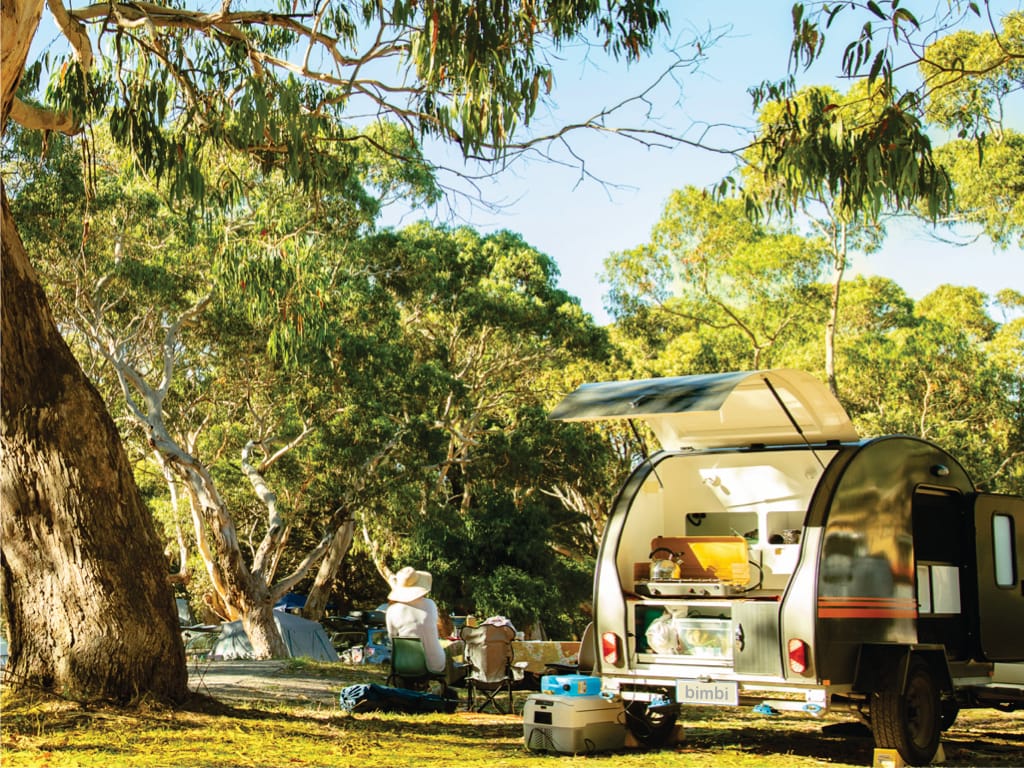
Cape Otway is the location of a refreshing break after overdoing a sightseeing tour. Bimbi Park is a rustic campsite in Otway National Park where one would experience an adventure of sleeping under koalas in their environment. They are at first difficult to spot, being selective feeders taking leaves off only a few species of eucalyptus. But as soon as you learn to know their grunting call, you can follow them more easily in the treetops. One of the sights that children will never forget is when one perches on a close branch and stays there for hours, making an unforgettable highlight on the wildlife experience.
To have a tougher alternative, camping at Blanket Bay is the best and most tranquil place to be found. Amenities are primitive, such as drop toilets, but the beautiful environment and the ocean views make it worth it to anyone wanting a back-to-nature experience.
Leg 3: Cape Otway to Torquay
The last bit of the road trip along the Great Ocean Road trip tends to be the most spectacular with winding coastal cliff-side roads, golden beaches and easy-going surf towns that create a real feel of seaside Australia.
- Lorne to Anglesea: This part of the Great Ocean Road Australia, resembles a living picture postcard where you can gaze over unravelling ocean and beautiful seaside villages. You will be able to spend some of the overnight in this area to have time to see its beaches, cafes, and coastal hikes.
- Bells Beach: One of the most famous beaches in the world due to its magical waves, every April it hosts the Rip Curl Pro Surfing Championship.
- The Great Ocean Walk: Alternatively, when travelling on the road is not exciting enough, then you should consider going on this multi-day trek of the coastline and exploring the rugged terrain on foot.
Suggested 4-Day Itinerary
Day 1: Melbourne → Warrnambool
Take break for lunch while on the way, stop at the coast and then enjoy a diner over sunset.
Day 2: Warrnambool → Shipwreck Coast → Cape Otway
Get a glimpse of Bay of Islands, The Grotto, London Arch, and 12 Apostles and then get into the comfort of Otway National Park.
Day 3: Cape Otway Exploration
Hike to the lighthouse, meet some koalas and boast about the stars.
Day 4: Cape Otway → Torquay → Melbourne
Take the most picturesque route, stop by Bells Beach and spend the day basking in the sun on the sand at Torquay before heading back home.
Best Time to Go
The Great Ocean Road trip is possible at any time of the year, but your experience will be very different:
- Summer (Dec–Feb): Humid weather, large crowds.
- Autumn (Mar–May): Pleasant weather, low crowds— probably the ideal time.
- Winter (Jun–Aug): Cool weather, whale-watching season.
- Spring (Sep–Nov): Wildflowers and lush landscapes.
Practical Travel Tips
- Fuel Up Early: Some stretches have limited petrol stations.
- Pack Layers: Coastal weather can change quickly.
- Photography Gear: Bring a good camera—sunrise and sunset light is magical here.
- Local Produce: Stop at farm gates and markets along the way for fresh berries, cheese, and seafood.
Why It’s Worth the Journey
Driving around the Great Ocean Road Australia is not only a matter of checking off tick boxes on a map- it is the space in between. It is the spontaneous visit to the lonely beach. The giggles having fish and chips with your friends. The voice of sea breaking between high rocks.
The pleasure of the sight of a koala asleep in the branches of a tree. Every corner will show you something different be it a spectacular landscape, an idyllic village or even a memory of Australia. And even though the route is popular, it is simple to craft your own adventure by getting off course, travelling a bit slower, and going with the flow.



